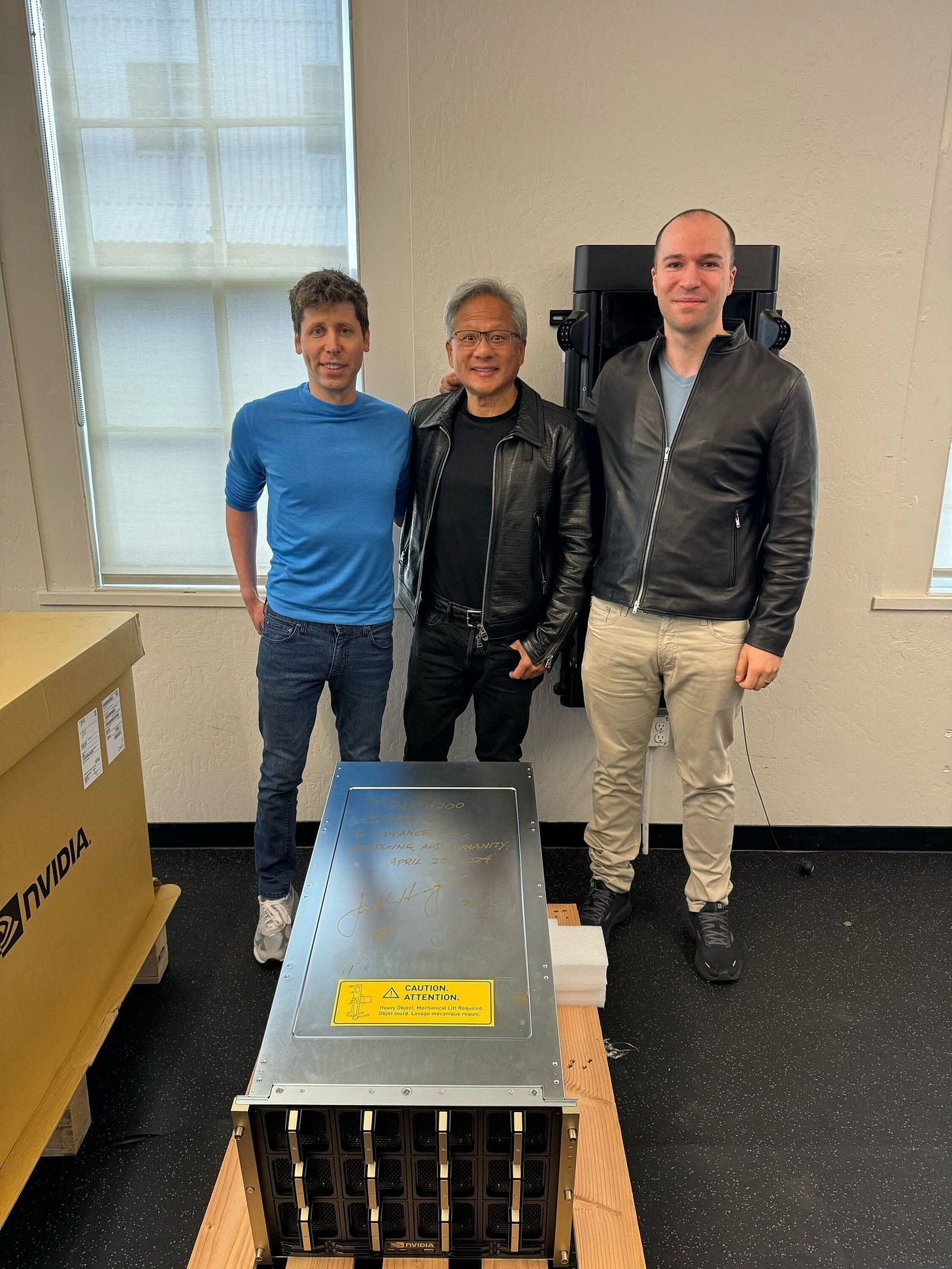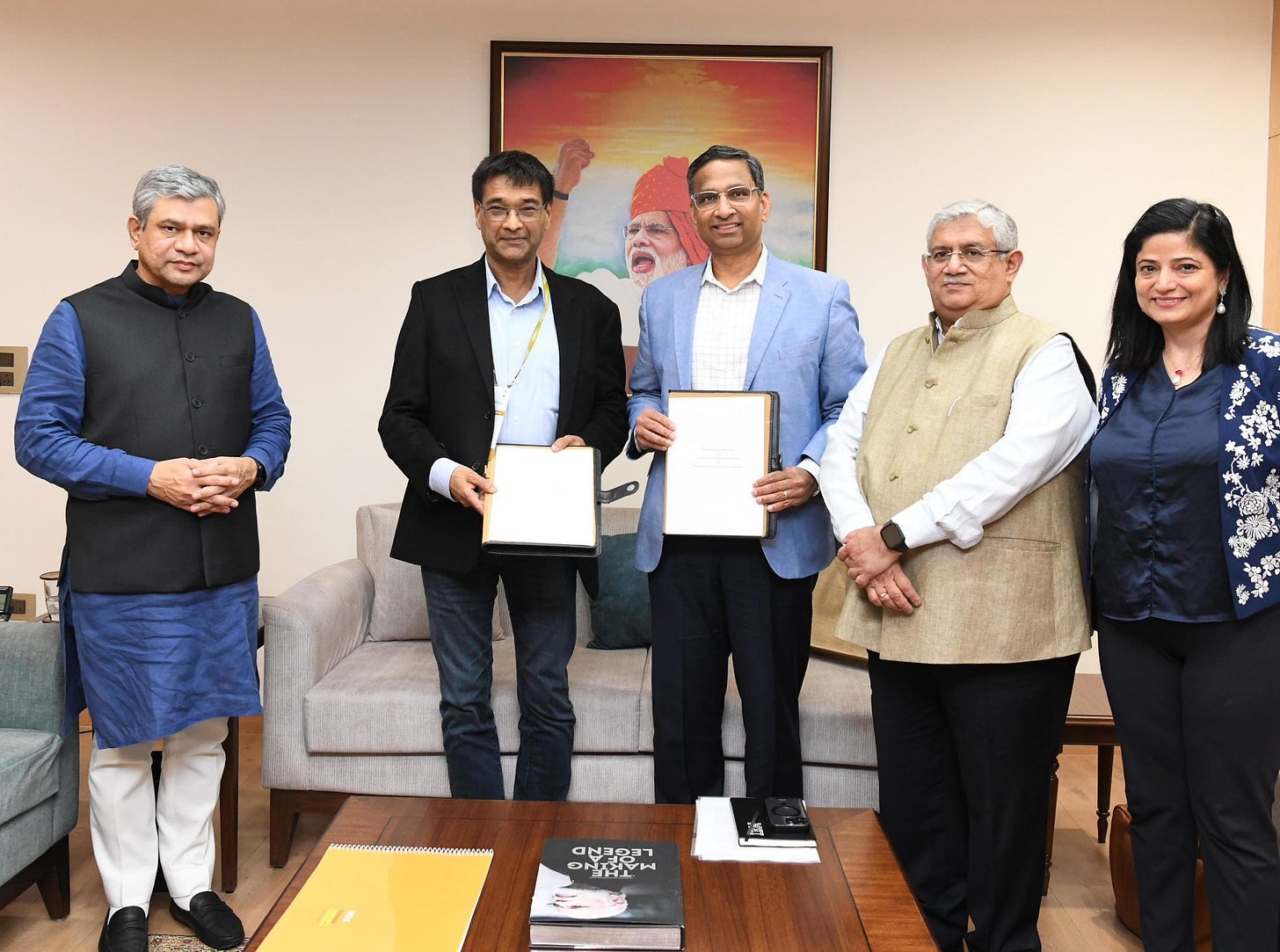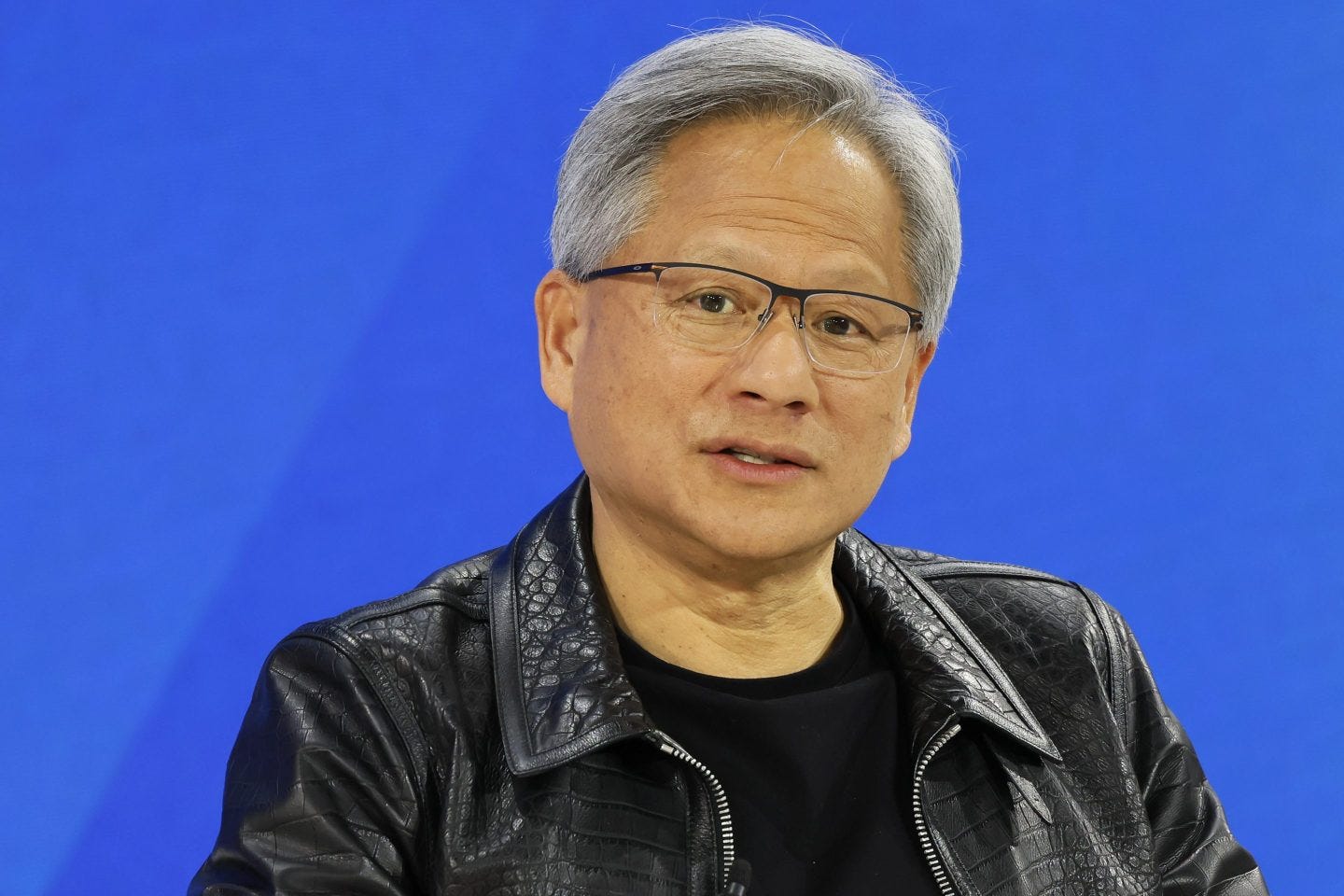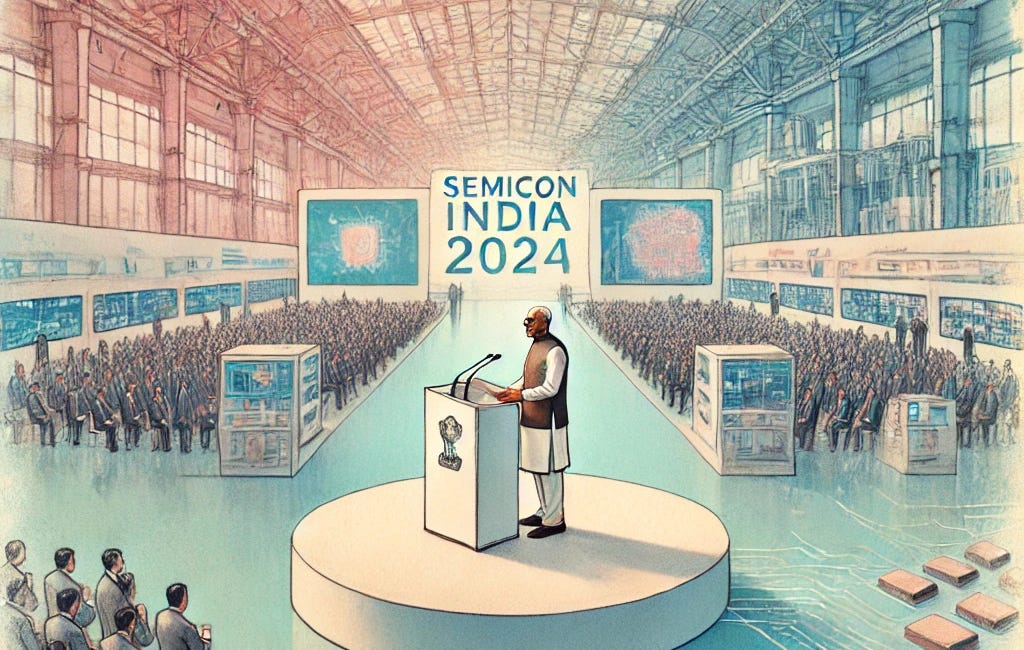AI Boom: Navigating Global Challenges with Nvidia’s CEO Jensen Huang
A Mission-Mode Policy is Crucial for India's Strategic Push in GPU Manufacturing and Training its Technical Manpower.
Nvidia's Jensen Huang on the Future of AI Infrastructure and Market Impact
Jensen Huang, the CEO of Nvidia, has positioned himself at the forefront of the AI revolution, leading a company that is driving transformative changes in industries globally. Speaking at the Goldman Sachs Communacopia + Technology Conference on September 11, 2024, Huang addressed a variety of topics ranging from the soaring demand for Nvidia’s AI products to the company’s role in shaping the future of data centers and computing. His remarks highlighted Nvidia's significant impact on the AI sector, the challenges of meeting surging demand, and the company's forward-looking vision.
AI Infrastructure and Exponential ROI
One of the key themes of Huang’s address was the impressive return on investment (ROI) Nvidia’s infrastructure delivers to its hyperscale customers. For every $1 spent on Nvidia’s systems, customers can generate $5 in rental revenue. This figure underscores the efficiency and value that Nvidia brings to the market, particularly through accelerated computing methods. Although the costs for companies using these methods may double, the speed at which tasks are completed increases by 20 times, resulting in a 10x overall savings.
Huang’s remarks emphasize the crucial role Nvidia plays in enabling AI-driven infrastructure, offering a glimpse into the future where high-performance computing will unlock vast economic opportunities.
The Twin Constraints of AI Expansion: Supply and Power
As AI applications are set to explode exponentially, transforming industries and reshaping the workforce, two major constraints stand in the way of faster adoption: the availability of high-performance GPUs and the immense power requirements. Nvidia, which controls 90% of the AI chip market, faces the challenge of meeting skyrocketing demand amid a supply crunch. “Everything is all sold out,” Huang stated, adding that tensions among customers are running high as they compete to secure Nvidia’s coveted hardware.
Beyond supply constraints, AI’s growing power demands raise broader concerns about energy consumption. As Nvidia's GPUs power massive data centers worldwide, these facilities require substantial energy to operate, increasingly drawing attention to the need for reliable and sustainable energy sources. Nuclear power has been suggested as a potential solution, but it brings its own set of challenges, such as cooling systems that may exacerbate global warming. Balancing the rapid growth of AI with environmental sustainability will be a key issue for the industry going forward.

The Future of Data Centers: Smaller, Faster, Greener
Huang also shed light on the future of data centers, where Nvidia’s innovations are paving the way for significant changes. Nvidia’s AI servers, though expensive, have the potential to replace thousands of traditional computing nodes, vastly improving efficiency. According to Huang, the future lies in smaller, densely packed, liquid-cooled data centers that are more energy-efficient and cost-effective.
This vision reflects Nvidia's forward-thinking approach to not only meet current demand but also prepare for the exponential growth of AI workloads. These new data centers will be central to handling the vast amounts of data required for AI applications, from real-time processing to complex simulations, and they represent a significant leap toward greener technology infrastructure.
AI Applications: Redefining the Role of Engineers
Huang emphasized the transformative power of AI in reshaping industries, particularly in computer graphics. AI now enables the computation of a single pixel to infer 32 others, vastly improving efficiency in fields like visual effects and gaming. More broadly, Huang predicted that the traditional model where every line of code is written by a software engineer is over. Instead, we are entering an era where digital engineers—AI systems working alongside human engineers—will handle much of the coding and design work.
This shift will fundamentally change the way companies operate, allowing for faster innovation cycles and freeing up human engineers to focus on more complex, creative tasks. The integration of AI in the engineering process is set to disrupt industries across the board, offering both challenges and opportunities for companies and workers alike.
Meeting Demand: Supply Challenges and Blackwell Products
While Nvidia’s technological advancements are groundbreaking, the company is struggling to meet the overwhelming demand for its products. “Customer relations are tense due to supply shortages,” Huang noted, as every client wants to be first in line to receive Nvidia’s cutting-edge AI chips. Despite these challenges, Huang reassured investors by reiterating the timeline for Nvidia’s next-generation Blackwell-based products, which are set to ship in the fourth fiscal quarter of 2024. These chips are expected to further solidify Nvidia’s dominance in the AI chip market, delivering even greater performance to customers in need of faster and more efficient computational power.
Nvidia's Vision: A Multi-Trillion-Dollar Opportunity
Looking ahead, Huang’s vision for Nvidia is nothing short of transformative. With 32,000 employees already working at the company, Huang expects them to be supported by as many as 100 times more digital engineers—AI-powered systems that will augment human capabilities. Nvidia sees multiple trillion-dollar opportunities emerging from AI applications, data center CPUs, and other advanced technologies. These opportunities highlight the vast economic potential of AI, which is poised to revolutionise industries from healthcare to finance.
India’s Strategic Push for GPU Manufacturing
a.) Groundbreaking Semiconductor Manufacturing Initiative
Even as Nvidia is on a rollercoaster ride, the Indian Government, under the dynamic leadership of Prime Minister Narendra Modi, is taking bold steps to bring high-performance GPU manufacturing to the country. A major milestone was the recent groundbreaking ceremony in Assam, led by the Tata Group. With a massive investment of ₹27,000 crore ($3.3 billion), this project is poised to create over 30,000 jobs and have the capacity to produce 48 million chips per day, serving sectors like automotive, electric vehicles, consumer electronics, telecom, and mobile phones . This initiative, supported by significant fiscal incentives, highlights India's ambition to build a robust semiconductor manufacturing ecosystem.
b.) India's Semiconductor Landscape: Bridging the Global Gap
Despite these impressive efforts, India’s semiconductor and computing infrastructure currently accounts for less than 2% of the global capacity, compared to the US and China, which jointly hold a commanding 58-59% share . While the Assam project— and others on the anvil— is a major step forward, it will take time for India to close this gap and emerge as a leader in the global semiconductor landscape. However, this initiative is crucial for ensuring national security and digital sovereignty, giving India greater control over its data and data centres.

c.) Interim Measures: Renting Technology and Workforce Development
As India continues to build its domestic manufacturing capabilities, the country must explore interim solutions like renting advanced GPUs to stay competitive. At the same time, India needs to focus on expanding and training its IT workforce. The IT-BPM sector currently employs 5.4 million people as of March 2023 , but this number needs to increase significantly to meet the growing demands of an AI-driven economy. Without urgent upskilling efforts, jobs in areas like coding, AR/VR editing, and even copywriting may become obsolete as AI technology advances.
d.) Turning Challenges into Opportunities
India is at a pivotal moment where the challenges posed by AI and automation can be turned into opportunities. The government has set ambitious targets, aiming to grow the electronics sector from its current value of over $150 billion to $500 billion by 2030, a move that could create 6 million new jobs . To achieve this, a business-as-usual bureaucratic approach won’t suffice. A proactive, mission-mode strategy is required to fast-track developments and ensure India stays competitive in the global semiconductor race.
Minister Ashwini Vaishnaw, under the guidance of Prime Minister Modi, is ideally positioned to lead this transformation. His leadership will be crucial in ensuring that India not only adapts to the changing technological landscape but also emerges as a global player in the semiconductor and AI industries.
Semicon India: A Comprehensive Approach
India's Semicon India programme, with a total outlay of ₹76,000 crore ($9.3 billion), reflects the government’s commitment to becoming a semiconductor powerhouse . This initiative supports companies investing in semiconductor manufacturing, display technology, and design ecosystems. By focusing on every aspect of the semiconductor ecosystem, from packaging units to full-scale foundries, the programme lays the foundation for India to become a global hub for semiconductor production. This comprehensive approach signals India’s intent to secure its place in the global semiconductor industry, addressing both immediate needs and long-term ambitions1.
Global Market Impact and Future Outlook
Despite recent stock market volatility, Nvidia’s stock has appreciated by nearly 150% over the past year, a testament to the market’s confidence in the company’s ability to lead the AI revolution. Investors continue to place their bets on Nvidia’s leadership in AI, recognising that the company is well-positioned to capitalise on the growing demand for AI infrastructure and applications.
Huang’s message conveys robust optimism, even as Nvidia faces supply shortages and increasing power demands. The company’s unwavering commitment to innovation, efficiency, and long-term growth firmly positions it at the forefront of the AI revolution. Nvidia’s capacity to not only meet but shape the growing demand for cutting-edge technology will be pivotal to its ongoing success. Reflecting investor confidence, Nvidia’s stock gained 1.92%, closing at $119.14 on Thursday, the day after Huang’s address, while the NASDAQ also ended the day up by 1%. Despite the immediate challenges, investors should maintain a forward-looking perspective, recognising that Nvidia is driving the future of AI, setting the stage for unparalleled economic and technological breakthroughs, in which India cannot afford to be left behind.
India’s Semiconductor Revolution: PM Modi Inaugurates SEMICON India 2024 in Greater Noida
PM Modi Inaugurates SEMICON India 2024 in Greater Noida





